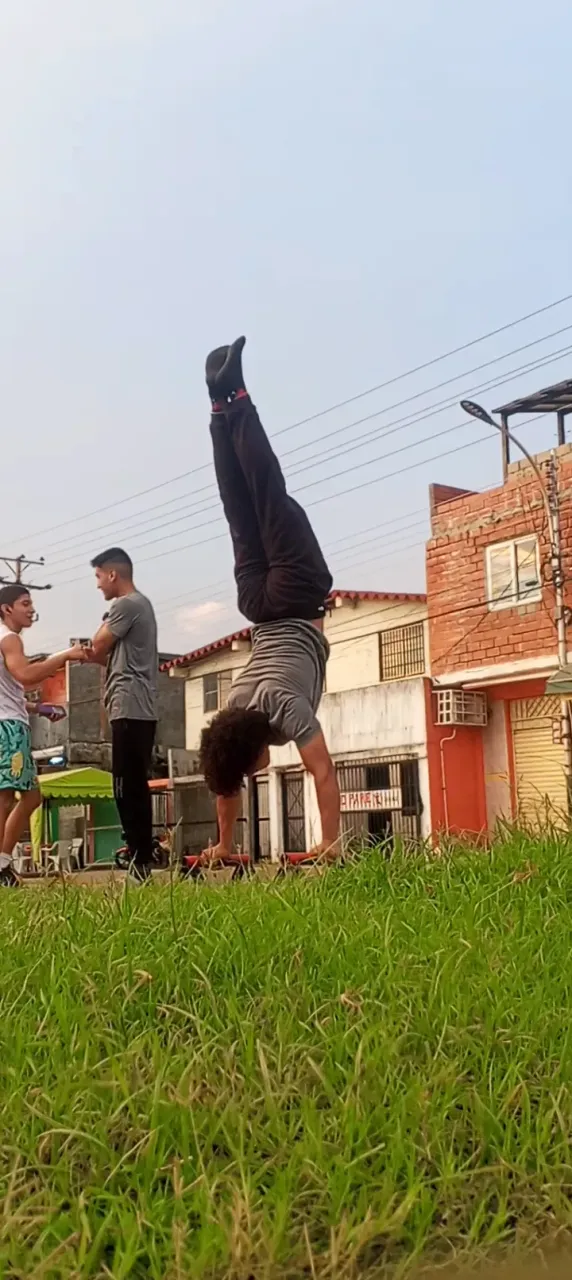


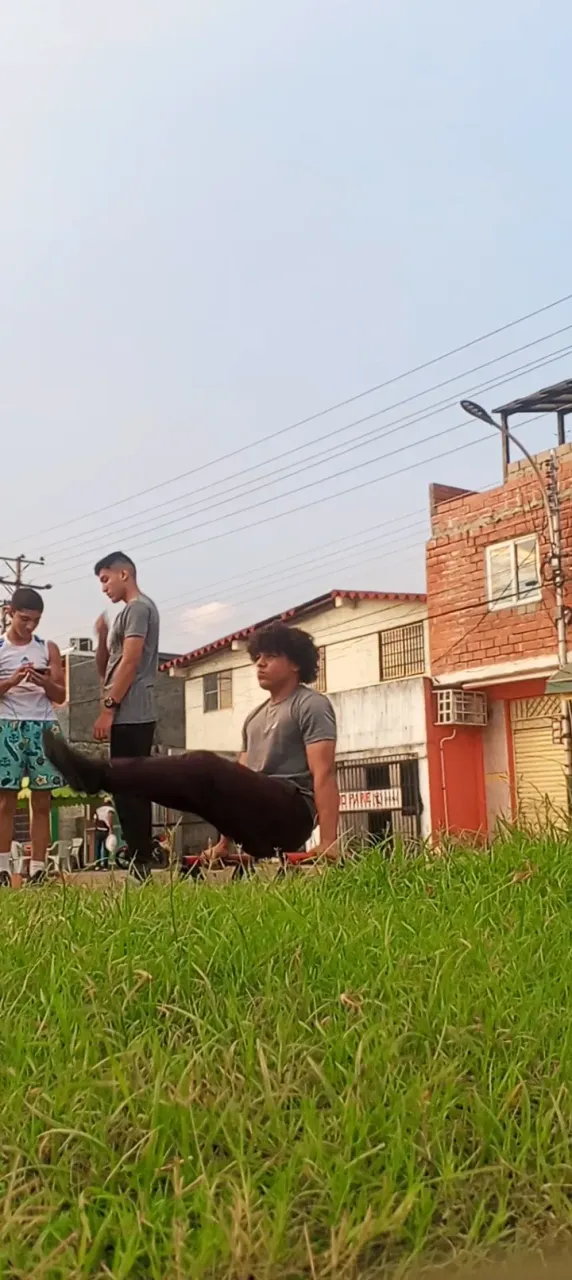
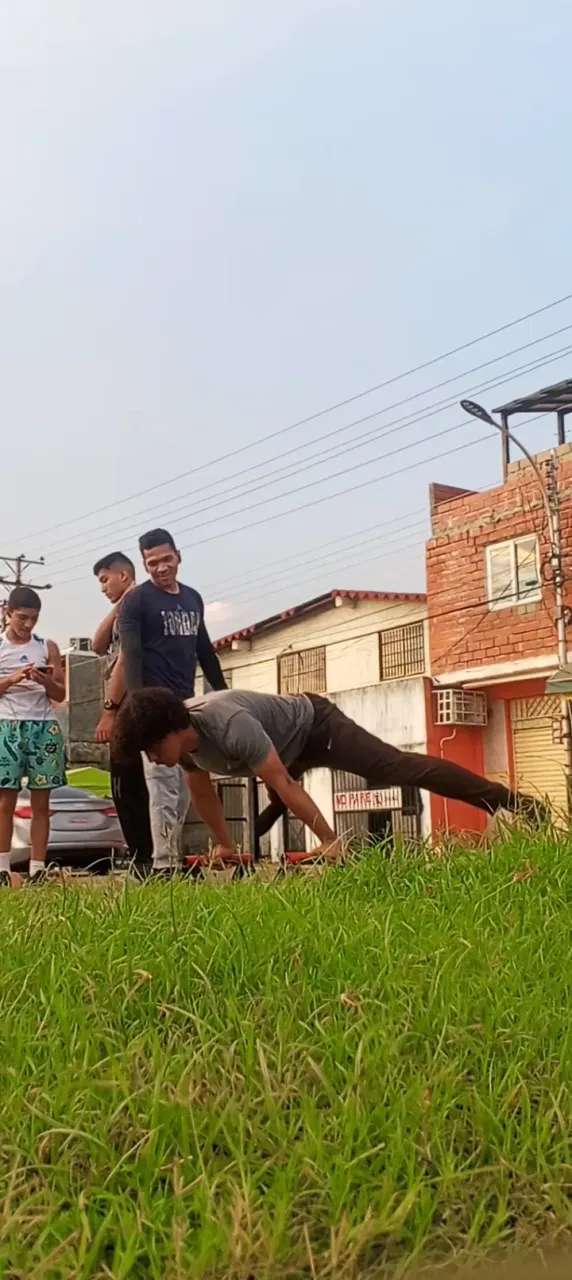

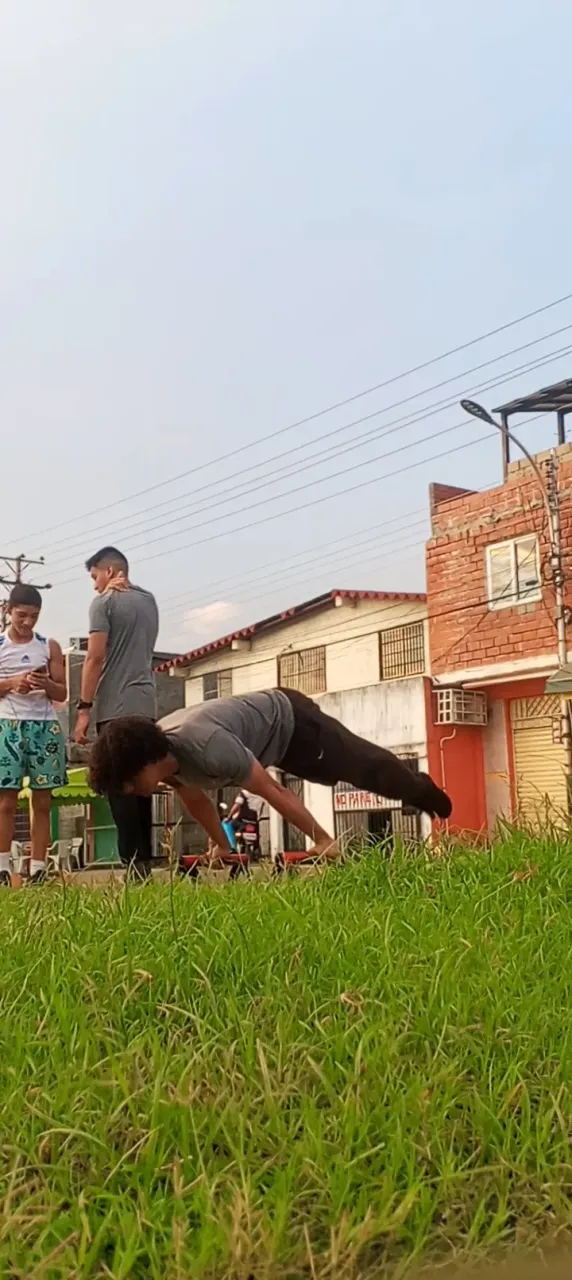
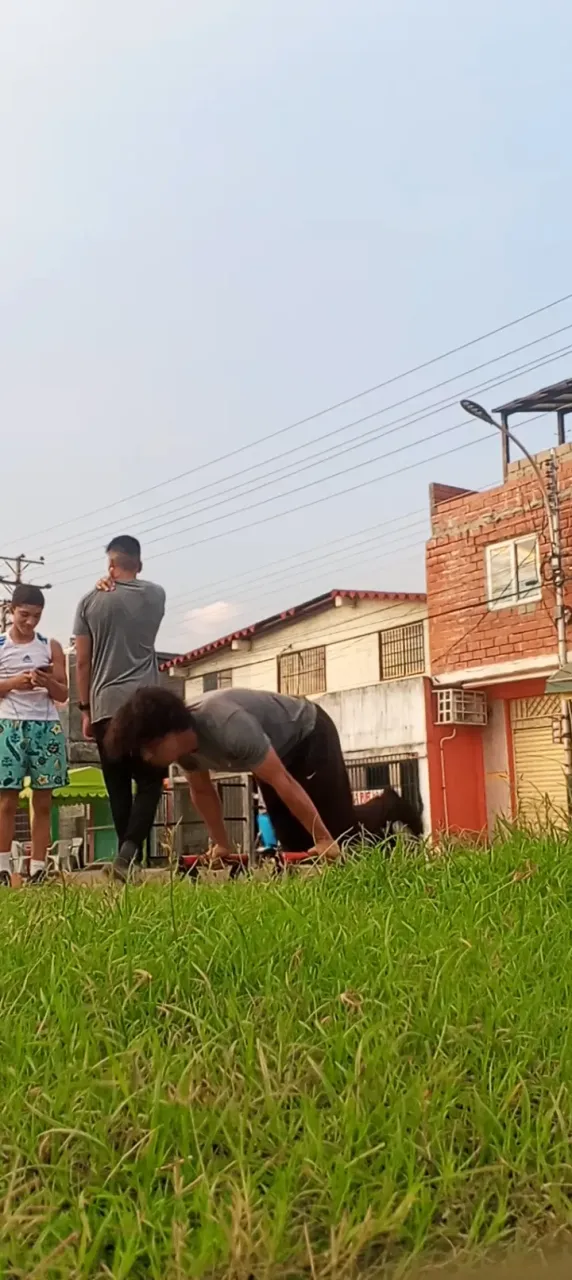
¡Saludos a la increíble comunidad de Hive, Liketu y Esency! 💪✨ Hoy vamos a sumergirnos en el fascinante mundo de los ejercicios estáticos en calistenia, un desafío que pone a prueba tu fuerza, equilibrio y disciplina. Si quieres dominar movimientos como el Full Planche, Straddle Planche, Pino (Handstand) y Tuck Planche, este post es para ti.
Vamos a desglosar cada estático, sus progresiones, errores comunes y cómo integrarlos en tu rutina. ¡Prepárate para llevar tu entrenamiento al siguiente nivel!
🔹 1. Full Planche: La Cumbre de la Fuerza Relativa
El Full Planche es uno de los estáticos más impresionantes en calistenia. Consiste en mantener el cuerpo completamente horizontal, suspendido solo con las manos, sin tocar el suelo con los pies.
🔸 Progresiones Clave:
- Planche Lean: Fortalece hombros y muñecas.
- Tuck Planche → Advanced Tuck Planche → Straddle Planche → Full Planche
- Uso de bandas de resistencia: Para reducir la carga al principio.
🔸 Errores Comunes:
- Arquear la espalda: Mantén el core activo para evitar lesiones.
- Muñecas débiles: Haz movilidad y fortalecimiento previo.
- Falta de paciencia: Puede tomar meses o años dominarlo.
💡 Consejo: Entrena push presses y planche push-ups para ganar fuerza explosiva.
🔹 2. Straddle Planche: Un Paso Antes del Full Planche
El Straddle Planche es una variación con las piernas abiertas (en straddle), lo que reduce la palanca y facilita el movimiento.
🔸 Progresiones:
- Desde Tuck Planche, abre gradualmente las piernas.
- Ejercicios de soporte: Mantén la posición con apoyo en paralelas.
- Negativas de Planche: Baja controladamente desde el handstand.
🔸 Errores Comunes:
- No controlar la apertura de piernas: Debe ser simétrica.
- Falta de tensión en glúteos y core: Todo el cuerpo debe estar activo.
💡 Consejo: Usa isométricos (aguanta 10-30 seg) para mejorar tu resistencia.
🔹 3. Pino (Handstand): La Base de Todos los Estáticos
El pino (o handstand) es fundamental para dominar otros estáticos. Mejora tu equilibrio, fuerza de hombros y control corporal.
🔸 Progresiones:
- Pino contra la pared → Pino libre → Pino con formas (Straddle, Pike, etc.)
- Handstand Push-Ups (HSPU): Para ganar fuerza.
- Trabajo de movilidad de hombros: Evita lesiones.
🔸 Errores Comunes:
- No alinear hombros, cadera y pies.
- Miedo a caer: Practica salidas seguras (rolls o piruetas).
💡 Consejo: Graba tus intentos para corregir la forma.
🔹 4. Tuck Planche: El Primer Gran Desafío
El Tuck Planche es la primera progresión seria hacia el Full Planche. Las rodillas están pegadas al pecho, reduciendo la palanca.
🔸 Progresiones:
- Frog Stand → Tuck Planche → Avanzado (piernas más extendidas).
- Ejercicios complementarios: Dips, push-ups explosivos.
🔸 Errores Comunes:
- No mantener los codos bloqueados.
- Falta de compromiso en el core.
💡 Consejo: Si no aguantas 10 seg, retrocede a una progresión más fácil.
🔹 ¿Cómo Entrenar Estos Estáticos?
🔸 Rutina Recomendada:
1️⃣ Calentamiento: Movilidad de muñecas, hombros y espalda.
2️⃣ Fuerza Isométrica: 3-5 series de 10-30 seg por estático.
3️⃣ Dinámicos: Planche leans, handstand push-ups, negatives.
4️⃣ Fortalecimiento Complementario: Pull-ups, dips, core work.
🔸 Frecuencia:
- 3-4 veces por semana (alternar con días de descanso activo).
🔹 Conclusión: Paciencia y Constancia
Dominar estos estáticos no es fácil, pero con disciplina y una buena progresión, ¡puedes lograrlo! Recuerda:
✅ Enfócate en la técnica antes que en el tiempo.
✅ Graba tus entrenamientos para analizar errores.
✅ Combina fuerza, movilidad y descanso.
¡Y eso es todo por hoy, comunidad de Hive, Liketu y Esency! Espero que este post les ayude a conquistar sus metas en calistenia.
📢 ¿Cuál de estos estáticos estás entrenando? ¡Déjalo en los comentarios! 👇💬
#Calistenia #Planche #Handstand #Estáticos #Fitness #Hive #Liketu #Esency
¡Nos vemos en el próximo post! 🚀🔥
Greetings to the amazing communities of Hive, Liketu, and Esency! 💪✨ Today, we're diving deep into the fascinating world of static holds in calisthenics, a challenge that tests your strength, balance, and discipline. If you want to master moves like the Full Planche, Straddle Planche, Handstand, and Tuck Planche, this post is for you.
We’ll break down each static hold, its progressions, common mistakes, and how to integrate them into your routine. Get ready to take your training to the next level!
🔹 1. Full Planche: The Peak of Relative Strength
The Full Planche is one of the most impressive static holds in calisthenics. It involves holding your body completely horizontal, suspended only by your hands, with no contact between your feet and the ground.
🔸 Key Progressions:
- Planche Lean: Strengthens shoulders and wrists.
- Tuck Planche → Advanced Tuck Planche → Straddle Planche → Full Planche
- Using resistance bands: Helps reduce the load in the beginning.
🔸 Common Mistakes:
- Arching the back: Keep your core engaged to avoid injury.
- Weak wrists: Work on mobility and strengthening beforehand.
- Lack of patience: It can take months or even years to master.
💡 Tip: Train push presses and planche push-ups to build explosive strength.
🔹 2. Straddle Planche: A Step Before the Full Planche
The Straddle Planche is a variation with legs spread apart, reducing the lever length and making the move slightly easier.
🔸 Progressions:
- From Tuck Planche, gradually open your legs.
- Support exercises: Hold the position on parallel bars.
- Planche Negatives: Lower slowly from a handstand.
🔸 Common Mistakes:
- Uneven leg spread: Keep it symmetrical.
- Lack of tension in glutes and core: Your entire body should be engaged.
💡 Tip: Use isometric holds (10-30 sec) to improve endurance.
🔹 3. Handstand: The Foundation of All Static Holds
The handstand is fundamental for mastering other static holds. It improves balance, shoulder strength, and body control.
🔸 Progressions:
- Wall-assisted handstand → Freestanding handstand → Handstand variations (Straddle, Pike, etc.)
- Handstand Push-Ups (HSPU): Builds strength.
- Shoulder mobility work: Prevents injuries.
🔸 Common Mistakes:
- Misaligned shoulders, hips, and feet.
- Fear of falling: Practice safe exits (rolls or pirouettes).
💡 Tip: Record your attempts to correct form.
🔹 4. Tuck Planche: The First Big Challenge
The Tuck Planche is the first serious progression toward the Full Planche. Knees are tucked to the chest, shortening the lever.
🔸 Progressions:
- Frog Stand → Tuck Planche → Advanced Tuck (legs more extended).
- Supplementary exercises: Dips, explosive push-ups.
🔸 Common Mistakes:
- Not locking the elbows.
- Lack of core engagement.
💡 Tip: If you can’t hold for 10 sec, regress to an easier progression.
🔹 How to Train These Static Holds?
🔸 Recommended Routine:
1️⃣ Warm-up: Wrist, shoulder, and back mobility.
2️⃣ Isometric Strength: 3-5 sets of 10-30 sec per hold.
3️⃣ Dynamic Work: Planche leans, handstand push-ups, negatives.
4️⃣ Supplementary Strength: Pull-ups, dips, core work.
🔸 Frequency:
- 3-4 times per week (alternate with active recovery days).
🔹 Conclusion: Patience and Consistency
Mastering these static holds isn’t easy, but with discipline and proper progressions, you can do it! Remember:
✅ Focus on technique before hold time.
✅ Record your training to analyze mistakes.
✅ Combine strength, mobility, and rest.
That’s all for today, Hive, Liketu, and Esency community! I hope this post helps you conquer your calisthenics goals.
📢 Which of these static holds are you training? Drop it in the comments! 👇💬
#Calisthenics #Planche #Handstand #StaticHolds #Fitness #Hive #Liketu #Esency
See you in the next post! 🚀🔥
| | |